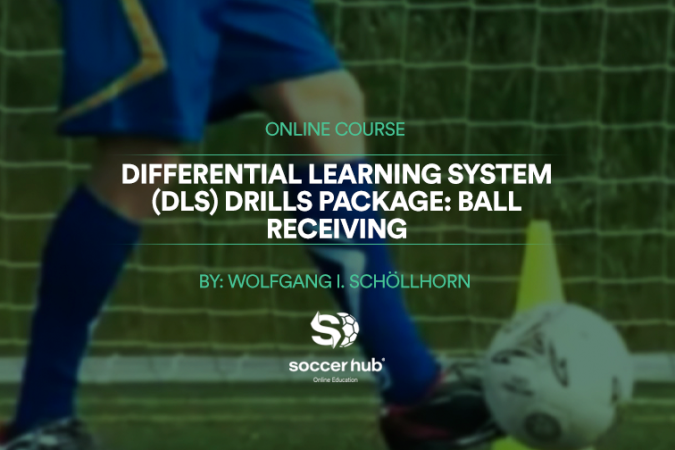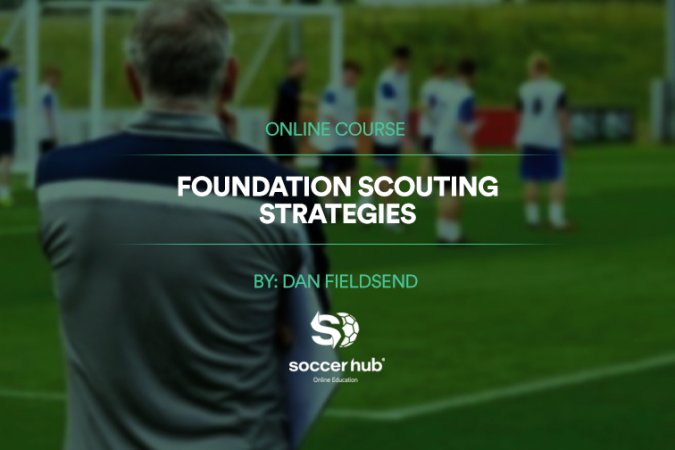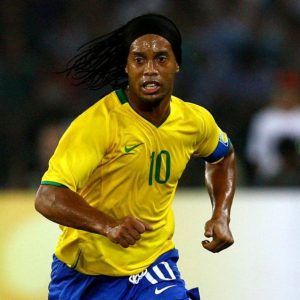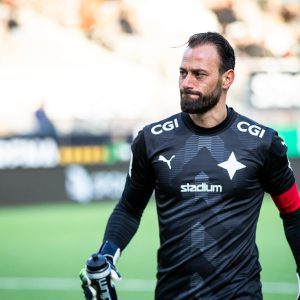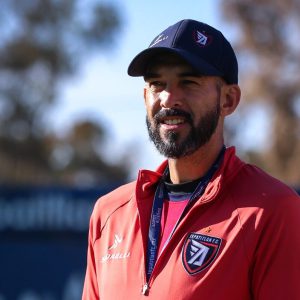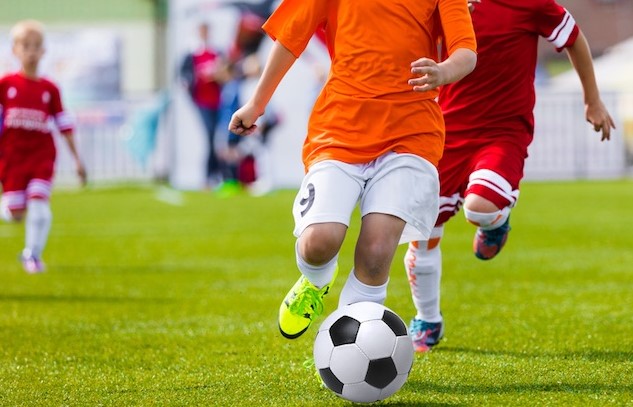

The Learning Curve in Soccer
Learning Curve – What looks good on YouTube, may not be effective to your learning experience.
Today, I decided to bring a subject that may be controversial and have some different points of view. That’s perfect for me, because I’m always looking into exchange some opinions/ideas (one friend mine call this exchange “gym for the brain”). I don’t have all the answers, not even the researchers do, and as the topic suggests, we are constantly Learning from each other and that’s is great. My articles are based in Podcasts and articles that I listen and read, and also my experience as a former player and most recently as a coach.
This article I decide to talk about LEARNING CURVE, and some of the learning process, because I believe that is important as a coach to understand how can we deliver the right information and how can we understand how much they learn and how that will affect how they perform.
The Learning Curve, in a very simplify way to explain, it’s a representation of the relationship between how well we practice (Learning) and how well we play (Performance).
In other words, it’s a “graphic line” that allows you to define how much of the learning from practice is actually transfer for playing/performance environment, (if you noticed, I highlighted “representation” because is not that linear “A+B=C”, this line/graphic will not be a indicator of the quality and quantity of skill transfer to the game as well as the performance rate, what the athlete has learned), in other words, it’s not because you have a gradually learning line moving up that players will start performing spectacular, it’s not this simple and linear, but let’s try to break the concepts and understand what we can do to help improving the learning environment and also the skill transfer into the performance environment.
In the beginning of the season (beginning of a new learning process), this line/graphic will show tremendous improvement. This is a direct reflection of the amount of information absorbed by players, this will also impact positively they performance side quickly. As the weeks go by, this line starts to slow down and the speed rate of this improvements decreases dramatically, to this slowing down movement experts called it Power Law of Practice (1) (like you can see the explanation on the link).
SKILL is ‘the learned ability to bring about pre-determined results with maximum certainty, often with the minimum outlay of time or energy or both.’
Barbara Knapp (1977)
Let’s explain the difference between Learning and Performing for a better and more clear understanding.
LEARNING – is ‘the more or less permanent change in behaviour that is reflected in a change in performance’ (Knapp). Learning is a lifelong process – even elite sports performers claim that they are still learning about their sport in order to improve their performance. Every learner will progress through the stages of learning, given appropriate opportunities to practice and receive feedback.
“You can teach a student a lesson for a day; but if you can teach him to learn by creating curiosity, he will continue the learning process as long as he lives.”
Clay P. Bedford
PERFORMANCE – is a demonstration of the solving of a problem or task at a given moment in time i.e. it is a temporary phenomenon. We can all think of very skilful performers that have an abundance of ability who sometimes turn in a poor performance.
Subjective assessments needs to be performed to determine what type of learning curve every athlete is demonstrating, and that will help the coach to adapt/reinvent the “learning environment” that better supports the athlete’s needs to improve the performance rate and skill transfer.
There are a variety of shapes to learning curves, each giving us information relating to the rate of learning.
TYPICAL CURVES:
- Linear
The rate of improvement is directly proportional to the number of practice sessions – there is constant improvement.
- Negatively accelerated
This shape shows that the individual has performed better in earlier sessions than in later ones – the rate of performance improvement is slowing. What could be the reasons for this? This could be explained by the performer having reached their potential, be receiving poor coaching, boredom etc.
- Positively accelerated
This shape shows that the individual has performed better in the later sessions than in the earlier ones, and that the rate of performance is getting faster.
- Plateau
This often occurs when the athlete is trying to do too much and is over-tired (beginning of over burning), they could be lacking motivation, have reached their potential etc.
Some considerations when talking about Learning Skills:
- Skill is a learned ability, while ability is inherent.
- Learning is affected and determined by several factors, it is requires careful monitoring to offset plateauing.
- Social learning theorists believe that we learn by observing other people. This is known as observational learning.
- Transfer of learning refers to the effect that learning one task has on the learning of another. It is important to note that not all transfer enhances learning.
STAGES OF LEARNING – “Fitts and Posner (1967) describe 3 phases of learning:
- COGNITIVE – This is the beginner phase. In this phase demonstrations are important, together with clear verbal explanations. The visual demonstrations give the learner a mental picture of the movement. Verbal cues can be used to ensure the correct sequencing of the movement. In this phase the learner has limited attention capacity so instructions should be brief and to the point. Manual guidance might also be used in this stage to guide the learner through the movement. This phase is characterised by lots of mistakes. Extrinsic feedback, especially positive reinforcement of correct responses, is needed to help the learner progress to the associative phase.
- ASSOCIATIVE – In this stage the learner has a mental picture of what is required but still makes mistakes. Movement patterns are more fluent, and the learner now begins to refine skills that are well learned. The learner begins to know the ‘feel’ of the movement and so can begin to use kinaesthetic feedback. However, they still need extrinsic feedback from the teacher/coach especially highlighting correct technique and timing. Faults need to be corrected at this stage to stop the learner developing bad habits.
- AUTONOMOUS – Movement patterns are now well learned and are performed competently and they have become automatic. This means that the learner does not have to concentrate on performance so will have spare attention capacity, enabling them to concentrate on other things. The learner will make greater use of kinaesthetic information but will also still benefit from more complicated technical feedback from their coach.”
Now that we better understand this two concepts (Learning and Performing), it’s important to know how can we design our practices to ensure a positive Learning environment that will guide us to a better Performance environment, changes from the interactions between of new knowledge and skills in each domain, which ultimately result in increased efficiency relatively long lasting. “In the motor domain, the Motor Learning, it is the field of research that more provides theoretical subsidy on this process, investigating the problems related to the acquisition of motor skills and the factors that influence it.
Among these factors, the structuring of practice is one of the topics that have gained greater prominence in recent decades.
A thematic of great evidence in the field of research on the structuring of practice is that of the contextual interference. In general, the studies carried out on this topic seek to verify which is the best way to structure the varied practice, which is characterized by the practice of two or more variations of the same skill, or by practicing two or more skills in one practice session.
The contextual interference effect is a well-established motor learning phenomenon. It refers to the interference that is experienced when practicing multiple skills, or variations of a skill, within a single practice session (Shea and Morgan, 1979). High contextual interference emerges when multiple skills are practiced one after the other, whereas low contextual interference transpires when one skill is repeatedly practiced before progressing to another skill. The most intriguing aspect of the contextual interference effect is the inverse relationship that is apparent between performance during practice and performance during skill-retention and skill-transfer tests. Low contextual interference practice typically produces better performance during practice, whereas high contextual interference practice leads to better performance during retention and transfer tests (for reviews, see Magill and Hall, 1990; Brady, 1998, 2004; Barreiros et al., 2007). (2)
“When a player practice in a Isolated Skill training environment (also known as Block Practice) doing for example just passing or shooting this player “usually” will perform better during training, if we compare to a player training in a Random practice (non-linear practice). Overtime the random-practice-player will improve his performance to a higher level than the Isolate-practice-player, since studies show a better retention (i.e. the ability to perform the skill sometime after training) and transfer (i.e., the ability to perform a slightly different skill than the one your trained) of skills.
- The Elaboration Hypothesis proposes that the reason this occurs is that random practice leads to the development of more elaborate proceduralized memories
- The difference between random and blocked practice in much smaller when you measure real sports skills as opposed to simple lab tasks
- Learning curves are also sensitive to temporary variables such as the athlete’s level of fatigue on the day of training, their mood, their motivation etc.
- It is critical to include retention trails in a training study so you can really assess long term learning
- Other ways to assess learning (instead of plotting performance changes during practice) include: (i) evaluating how well the learner can handle secondary tasks which draw their attention away and (ii) measuring efficiency or economy, that is how much effort (e.g., muscle activity, oxygen consumption) is required for a given performance level” (3)
“Development is non-linear, learning is non-linear. Therefore talent is non-linear.”
Mark O’Sullivan
As coaches our mission is to “feed” knowledge to our players, and making sure they learn/improve every day, we are in this for them.
A good Learning Environment sometimes can look chaos, but the outcome of that practice is what really should be our concern, how can/will the players skill transferred it into Performance ability and permanent Retention.
Learning Curve – What looks good on YouTube, may not be effective to your learning experience.
By Filipe Teles. Like, Follow and Share https://www.facebook.com/FilipeTelesCoach/
(1) – Explanation vídeo about Power Law of Practice https://youtu.be/QP4kRV_lsVQ
(2) – Contextual Interference effect https://www.frontiersin.org/articles/10.3389/fpsyg.2017.01931/full
(3) – Off the Learning Curve – Perception and Action Podcast https://open.spotify.com/episode/5ibtPNmYZrNkHvLfdOGu2j?si=9_70da1uRNOrRdnR_U5rhw
Get to know more about Soccer HUB!
Follow us on Facebook!
Categories
Latest Courses
-
9 Lessons
-
1 Lesson
-
6 Lessons
You May Also Like
-
-
August 1, 2022
-
-
June 3, 2022
-
-
May 27, 2022


